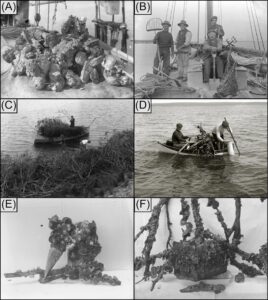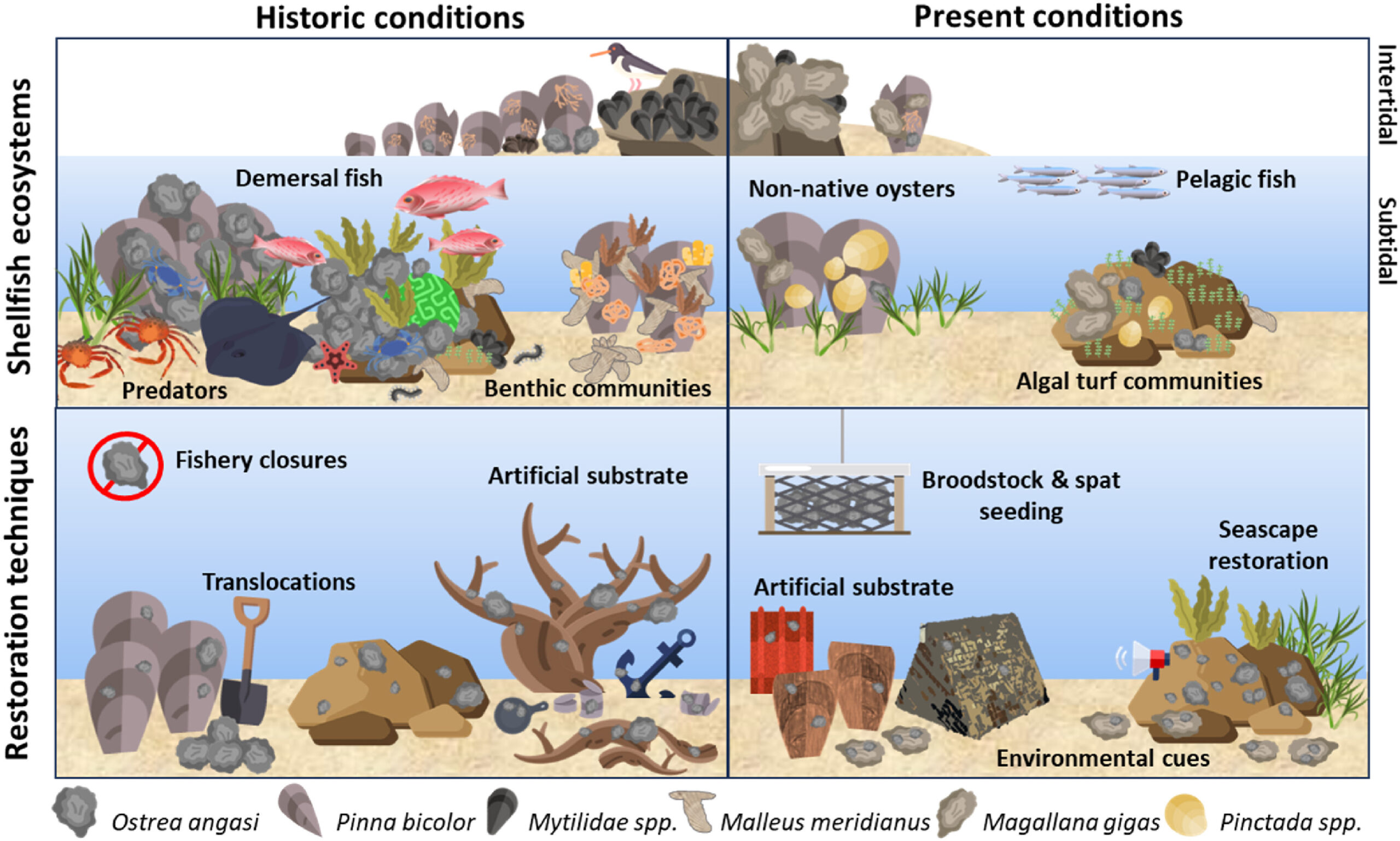
When you slurp an imported or fresh exotic Pacific oyster, spare a thought for South Australia's lost or forgotten shellfish reefs.
Coastal management and reef restoration has never been more important with shellfish reefs among the most impacted coastal ecosystems, warn Flinders University marine biology experts.
 "As we approach the middle of the United Nation's Decade on Ecosystem Restoration, shellfish ecosystems have suffered enormous declines worldwide, including losses of up to 85% of oyster reefs, and South Australia is no exception," says Brad Martin, from the College of Science and Engineering, in a new article in the journal Ocean and Coastal Management.
"As we approach the middle of the United Nation's Decade on Ecosystem Restoration, shellfish ecosystems have suffered enormous declines worldwide, including losses of up to 85% of oyster reefs, and South Australia is no exception," says Brad Martin, from the College of Science and Engineering, in a new article in the journal Ocean and Coastal Management.
The new research, led by Flinders PhD candidate Brad Martin, trawled through historical and archival records tracking centuries of South Australia's shellfish management, reviving new information on past reef ecosystems and management practices.
"This research offers a multi-species approach to guide shellfish reef restoration today," says Mr Martin.
"Successful conservation requires robust knowledge of ecosystem characteristics and the environmental stressors, to inform better coastal management, restoration targets and important community and other stakeholder support. Efforts to restore shellfish reefs have increased due to growing awareness of their loss and ecological importance."
Flinders researchers analysed data from the state's libraries, archives and newspaper articles that described South Australia's flat oyster (Ostrea angasi), razor clam (Pinna bicolor), and hammer oyster (Malleus meridianus) reefs.
Oysters are classified as filter feeders that remove plankton and other organic particles from marine systems. As a result, shellfish reef losses have had significant outcomes for documented marine life and negative socio-economic impacts to coastal fisheries and communities.
More than 140 shellfish reef locations were identified, which covered about 2630 square kilometres of the state's coastal waters - including approximately 887 sq km of former native oyster reefs, and temperate coral oyster reefs. Most of these shellfish reefs no longer exist today.
 Commercial wild oyster harvesting commenced in the 1840s, and more than 43 million oysters were consumed by the 1910s, based on historic shipping and landing records. The high demand and potential declines motivated South Australia's earliest fisheries legislation (in 1853) and marine restoration efforts, including fishery closures (est. 1875), shellfish translocation (est. 1887), and marine reserves (est. 1912).
Commercial wild oyster harvesting commenced in the 1840s, and more than 43 million oysters were consumed by the 1910s, based on historic shipping and landing records. The high demand and potential declines motivated South Australia's earliest fisheries legislation (in 1853) and marine restoration efforts, including fishery closures (est. 1875), shellfish translocation (est. 1887), and marine reserves (est. 1912).
"We found successful, large-scale oyster reef restoration historically occurred in Port Lincoln and Kangaroo Island in the 1910s, and community awareness of the impacts of shellfish reef loss to local fisheries and other marine life including snapper and whiting. These provide important case studies for future restoration efforts."
Community research and restoration efforts in SA include the Port River shellfish reef restoration with OzFish Unlimited, Flinders University Citizen Science Reef on Kangaroo Island and the Coffin Bay citizen science oyster reef project, which supports production of the native oyster and razorfish for future generations.
The public is also encouraged to report records of existing shellfish ecosystems via citizen science programs such as iNaturalist or the Atlas of Living Australia.
The historical records indicate that shellfish reefs, of multiple ecosystem-forming bivalves, ultimately diminished over the past 200 years or so due to cumulative impacts of destructive benthic fishing practices, changes in marine resource management and environmental stressors, such as droughts, runaway predation and disease, despite multiple legislative and restoration attempts to reverse the declines.

"Past records indicate that razor clams or 'razorfish' (Pinna bicolor) were foundational to establishing multi-species shellfish reefs in South Australia by providing natural settlement surfaces for oysters," adds Mr Martin.

"While razor clams and hammer oyster ecosystems can still be found today, the data demonstrates that these ecosystems are understudied and diminished. Future studies may unlock additional restoration opportunities to revive South Australia's native shellfish."
Flinders marine biologist Dr Ryan Baring, a senior author on the paper, says: "There is a bias towards commercially popular species compared to the distribution and conservation status of our 'less loved' shellfish ecosystems, particularly razor clams, hammer oysters and native mussels, which co-occur in these reefs.
"By reconstructing past shellfish reef distributions and socio-cultural connections, this review identifies evidence-based opportunities and key knowledge gaps to guide future research and management efforts," says Dr Baring.
The article, 'Reviving shellfish reef socio-ecological histories for modern management and restoration' (2025) by Brad Martin, Charlie Huveneers, Simon Reeves (The Nature Conservancy Australia) and Ryan Baring has been published in Ocean and Coastal Management (Elsevier) DOI: 10.1016/j.ocecoaman.2025.107540.






